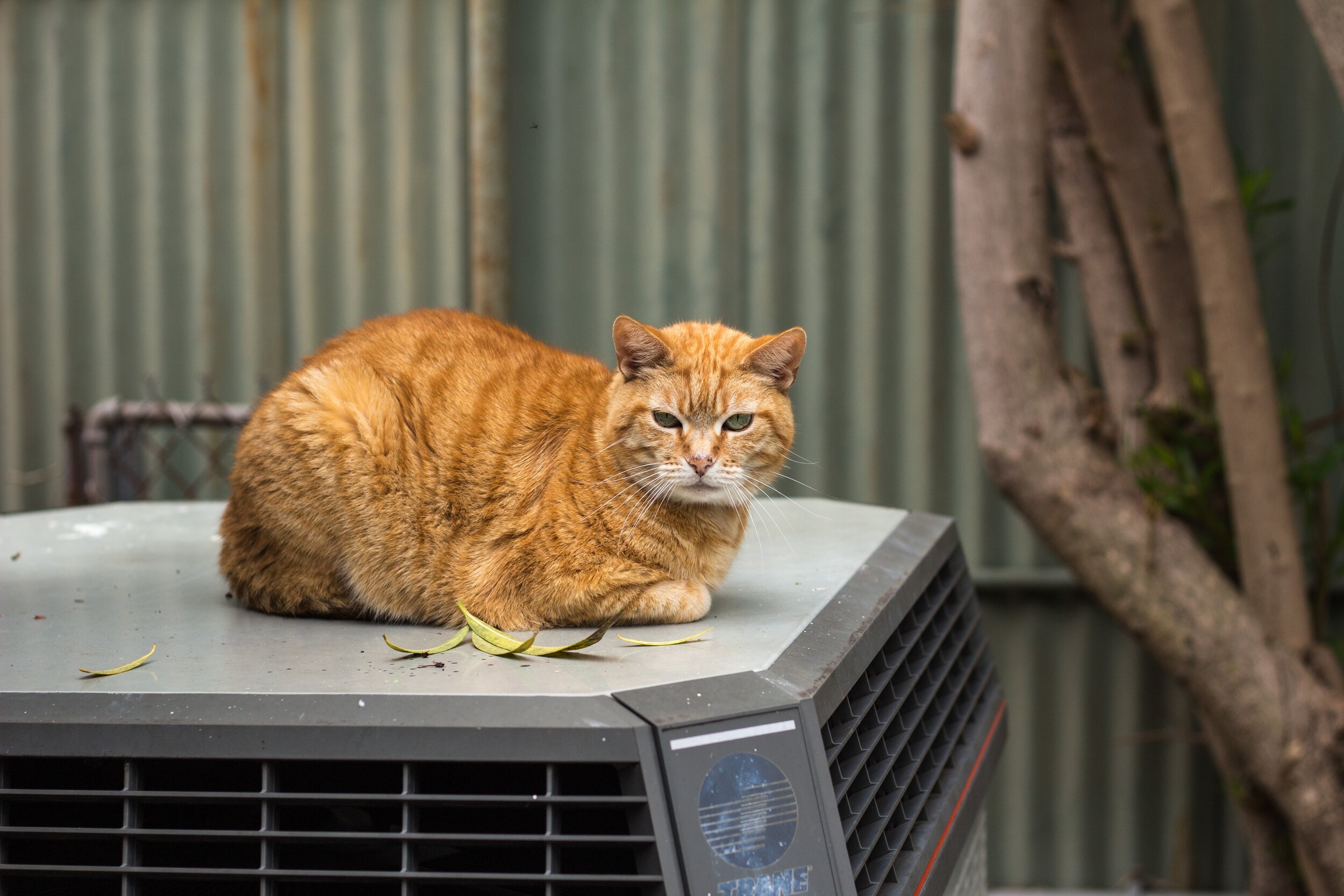Deterring Wildlife & Community Cats
Helping Neighbors live in peace with community cats
When Neighbors do not want the community cats in their yard, you can help them find solutions: Steps for Humanely Deterring Cats (aka Neighbor Relations)
How to Use Vinegar as a Cat Repellent (from The Nest) - White vinegar can be used either full-strength or diluted with water to repel cats. Click the link for more info!
Getting to know the neighbors and sharing what TNR is and how the cats help keep rodents and snakes away can go a long way! Keeping the areas where the cats eat and sleep neat and clean can help them feel more accepting of the colony. Cats that are fixed and fed regularly are also less likely to be bothering neighbors. And when needed, helping neighbors add scents or devices that make their property less desirable for the cats to hang out in can resolve any negativity towards the cats and you!
Natural deterrents that can be effective include:
Soak a cloth in eucalyptus oil and place it where you want a cat to stay away from or rub it on surfaces; you can also tie the cloth around plants.
Mix 20 drops of citronella with 200ml of water and spray in desired areas (also good for deterring insects).
Soak cotton balls with citrus oils (lemon, orange, lime) and place in areas you want cats to stay away from; You can also make a mixture of equal parts lemon and orange oils with 3 parts water, then shake and spray. Citrus peels can also be rubbed onto surfaces or grind the peels and sprinkle around plants. Or just put the peels in the garden. Citrus also naturally neutralizes pet odors!
Dried mustard, cayenne pepper, coffee grounds or dried rosemary also have been known to work.
Cinnamon, lemongrass, lavender, orange, and rosemary essential oils also can be effective. Apply to a paper towel to rub onto surfaces.
Plant prickly plants (such as blackberry, roses, holly, or Hawthorne), lavender, or coleus canina (aka Scaredy Cat Plant).
***Some cats dislike some smells more than others so try different ones
***AND NEVER SPRAY DETERRENTS DIRECTLY ON A CAT
There are a number of safe, nontoxic scents that cats don’t like and will tend to avoid:
coffee grounds (ask for free grounds at your local cafe)
used tea leaves
orange peels
plants: Coleus canin (scaredy cat plant), lavender, rue, geranium, lemon thyme
essential oils (mix 1 part oil with 3 parts water and spray mulch or fabric strips): citronella, orange, lemongrass, lavender, peppermint, eucalyptus, tea tree, anise
Note: Despite what you may see on other web sites, mothballs are toxic to pets, people and the environment. Bloodmeal, bonemeal and fish meal may also be toxic to pets if ingested. Please do not use these items.
Check out How to Live with Community Cats from Alley Cat Allies!
Visit this page for more tips from Multnomah County Animal Services
THE VACUUM EFFECT: WHY CATCH AND KILL DOESN’T WORK: A fact sheet from Alley Cat Allies
Cats and coyotes
Feral Colonies & Coyotes (From Community Cat Coalition)
Coyotes are a natural part of our environment and they perform a vital role in the health of ecosystems. But conflicts with pets and livestock, whether real or imagined, have made them an unpopular neighbor for many.
Whatever your feelings about coyotes, they are here to stay. And so are feral cats. Some shelters and communities actively discourage the feeding of feral cats because of the risk of drawing coyotes into a neighborhood. We believe this advice is inhumane and also misguided. So, we want to share some tips in protecting your feral colonies and minimizing attractants that may draw coyotes into your area.
Coyotes - Don't Attract Them
The best way to protect cats from predation is to avoid attracting the coyotes to begin with.
When possible, feed on a schedule and remove all food and food containers after the meal.
Avoid feeding birds, squirrels and other wildlife in the same area as the feeding station. Coyotes may be attracted to the leftover food and to the animals coming to eat it.
Pick up fallen fruit and other edible yard waste or compost. Coyotes love fruit.
Coyotes are attracted to animal waste. Keep the area clean and remove the waste of pets or livestock in the area.
Provide Escape Routes
Areas around homes, may have low-clearance sheds, barns or decks for cats to dash under, but you can add escape routes to improve their chances.
Place 10-12 inch X 6 foot PVC pipes around the feeding area and where they hang out. These should be held in place with garden stakes or cement blocks. Teach the cats to investigate them by tossing some treats inside.
Build a platform that is at least 7 feet tall. If you lack the space or skill to do this, screw a 4 X 4 pole on a pier block so they can climb up to get away. They pole should be a minimum of 7 to 8 feet. Placing it near a shed or building will allow them to get on top to escape.
Keep shelters away from the feeding area. Feral shelters should have a back door so they can escape predators or aggressive cats.
Take advantage of any fences or structures in the area.
Look around and think before deciding where to put the food.
Coyotes, Pets and Community Cats and How to Keep Coyotes out of Your Yard and Keep Your Pets Safe from The Humane Society of the United States
Helping Ferals in Coyote Territories from Stray Feral Rescue and CatTown

